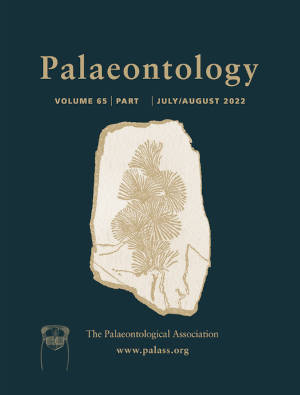Article: Diversification dynamics of cheilostome bryozoans based on a Bayesian analysis of the fossil record
Publication: Palaeontology
Volume:
65
Part:
1
Publication Date:
2022
Article number:
e12586
Author(s):
Farideh Moharrek, Paul D. Taylor, Daniele Silvestro, Helen L. Jenkins, Dennis P. Gordon, and Andrea Waeschenbach
Abstract
Abstract Cheilostomata is the most diverse and ecologically dominant order of bryozoans living today. We apply a Bayesian framework to estimate macroevolutionary rates of cheilostomes since the Late Jurassic across four datasets: (I) manually curated genus ranges; (II) published text-mined genus ranges; (III) non-revised Paleobiology Database (PBDB) records; (IV) revised and augmented PBDB records. All datasets revealed increased origination rates in the Albian, and a twin K–Pg and Danian extinction rate peak. High origination rates in the Late Selandian–Ypresian in Dataset I indicate the onset of an ascophoran-grade radiation. Lineage-through-time plots confirm the macroevolutionary lag preceding the radiation of cheilostomes in the middle Cretaceous, and their renewed diversification in the late Paleocene and Eocene. A multivariate birth–death model indicates that origination rates are shaped by diversity-dependent dynamics coupled with a positive correlation with sea surface temperature, while extinction rates negatively correlate with sea level. Text-mined data provide broadly similar rate dynamics as manually curated data, although discrepancies could be attributed to the omission of key literature in Dataset II, and the inclusion of new published and unpublished data, and revised ranges in Dataset I. Revision and augmentation of PBDB occurrences were necessary to generate rate profiles akin to those of Datasets I and II and highlight the risks of using unedited occurrence data. Our results support the widely held assumption that diversification dynamics are controlled by both biotic and abiotic factors, and pave the way for integrating fossils with molecular phylogenies to study these processes in more detail.
